Today we publish the second and final part of the interview with Sergey Yurievich Glazyev. Professor Glazyev, in his capacity as an advisor of President Putin, has been the architect of the Eurasian Union, regrouping a number of ex-Soviet Republics. He is an important Russian intellectual and politician, member of the Russian Academy of Sciences, a renowned specialist in Kondratieff’s long economic cycles and an influential opinion leader with leftist views in post-communist Russia.
Today’s part of the interview focuses on the dissolution of the USSR and the restoration of capitalism, on possible alternative paths, matters of socialism and market economy, the Chinese model, a comparison between the Eurasian and the European Union and the relation between capitalism and ecology.
Our interview with him took place last August. D.K.
You seem to dismiss Gorbachev’ slogans like “socialism with a human face” or “more democracy, more socialism”. Why? What do you think of Lenin’s definition of socialism like “Soviets plus electrification”? How would you define socialism now and what is the role of the masses, of the people, in the running of a “socialist society”?
These slogans launched by Gorbachev were perceived as demagogic, although they were followed by real political actions to democratize the political system, as well as serious management decisions on the conversion of the military-industrial complex, the reorientation of the national economy to the production of consumer goods, and the solution of the food problem. Many of these decisions were progressive in nature, but the problem was that they did not lead to the mobilization of the creative energy of the people, but to confusion and vacillation in society. The intellectual stratum, disillusioned with the communist ideology, together with the young people of the capital, who were seized by consumer psychology, wanted to break the Soviet-planned system and make it “like in the West”, naively thinking that it was possible to easily and quickly achieve the same level of consumption and democracy as in Western Europe or North America. At the same time, most of the party and government officials perceived Perestroika negatively, sabotaging Gorbachev’s appeals. The criminal community, as well as young people, saw in Perestroika opportunities for rapid enrichment based on the commercialization of the use of state property through cooperatives and other newly discovered forms of private entrepreneurship. Perestroika had no clearly defined goals, it opened the floodgates for decades of pent-up political energy of people, which, in the absence of a firm guiding force, acquired destructive forms. The masses, which received freedom of political expression, began to destroy the existing order, instead of gradually transforming it into a better one.
The role of the working class in these processes was far from the last, although not the decisive one. It is worth remembering the powerful miners ‘ strikes and their trips to the capital. They simply demanded higher salaries and social guarantees, but acted against the entire political system, also directed by American agents of influence. The role of labor collectives reached its maximum with the adoption of the law on state-owned enterprises, which introduced the election of directors at most of them. However, they did not work better because the pressure for wage growth increased and production discipline weakened. In a new world economic system, in which the socialist ideology prevails, labor collectives should participate in the management of enterprises through representation on the board of directors, as well as in the processes of strategic planning of the enterprise’s development. A significant place will be occupied by people’s enterprises, managed by the workers themselves according to a certain procedure.
Lenin’s famous formula “Socialism is Soviet power plus electrification of the whole country” was associated with the ГОЭЛРО program – the world’s first document of strategic planning for economic development based on the accelerated construction of power plants and the introduction of electrical equipment.
Currently, the core of the new technological order is made up of nano, bio-engineering, information and communication technologies, the transition to it is often called the digital revolution. Digitalization has reached all the leading countries of the world and has accelerated due to measures to combat the pandemic. It expands continuously the possibilities of managing both production and the social sphere. These opportunities can be used both for the purposes of socialist construction (it is no accident that China is a leader in 5G mobile communication systems, non-cash payments and settlements or solar energy) or of strengthening the power of Capital, equipping it with robotics and citizen tracking systems. Taking into account this reservation, we can say that the digitalization of production and management systems, together with the constitutional establishment of the dominance of public relations over private ones and the introduction of direct democracy and strategic planning tools, can become the technological basis for managing modern socialist construction.
Results of capitalist restoration in the USSR
Thirty years have passed since the destruction of the “socialist bloc” and of the USSR and the introduction of capitalist relations of production, of distribution and the corresponding “civilizational”, “ideological” superstructure. What does the balance sheet of the post-soviet experience look like? What prospects do you see now for Russia and the other ex-Soviet republics?
Market reforms introduced following the model of “shock therapy” turned into an economic catastrophe for Russia and the other former Soviet republics. The volume of production fell by half, investment fell five times and the income of the majority of the population fell below the poverty level. Alcoholism and drug addiction sharply increased, and an epidemic of socially conditioned diseases has begun. The total demographic losses in Russia alone amounted to about 12 million people. Monstrous social inequality has divided society into antagonistic classes. The country has been turned into a donor of Western countries: the export of capital from the territory of the former Union exceeded $2 trillion, the brain drain amounted to hundreds of thousands of highly qualified specialists, billions tons of non-reproducible natural resources were exported for processing abroad. Most branches of the high-tech industry have ceased to exist. During the thirty post-Soviet years, the economic activity has barely reached the Soviet level but with degradation of the structure of the economy and the volume of investment still half the Soviet level.
There are two prospects for further development: either the continuation of degradation on the periphery of American-European capitalism, or advanced development on the basis of a new technological and world economic structure modeled on the PRC (People’s Republic of China). In the second case, the possibility of outstripping the development of the Russian economy with a rate of about 10% of GDP growth per year remains. But to do this, it is necessary to revive the socialist ideology, subordinate market relations to the tasks of improving people’s welfare, subordinate monetary policy to the goals of investment and production growth, introduce a progressive taxation system, stop capital flight, “de-offshorize” the economy, deploy a strategic planning system based on public and private partnership.
The Russian empire has not known the disintegration processes all other Empires have known after WWI, for ex. the Austro-Hungarian and the Ottoman Empire. The greatest part of it managed to stay united around Lenin’s socialist project and even a new superpower was created out of it. It is debatable how much socialism really existed in the USSR, still it was called a “Union of Soviet Socialist Republics”. Do you see a causal link between the introduction of capitalism and the decomposition of the USSR? Do you believe the reintegration of the ex-Soviet space is possible in the context of capitalism?
Socialism in the USSR was an obvious reality, as well as the leading role of the Soviet Union in the creation of a world socialist system that covered a third of the world. The “dirigist” model of centralized planning was generated by objective circumstances, allowing the Soviet Union to win the Second World War against an enemy who had all the resources of Europe at his disposal. This management system turned out to be an order of magnitude more effective than the capitalist corporate model of the Third Reich. And it remained more effective than European capitalism until the transformation of scientific and technological progress into the main factor of economic growth. The lack of competition hindered innovation processes in the USSR, which resulted in the technological complexity of the Soviet economy and the growing backlog of the technical level of the national economy.
Historically, the restoration of capitalism occurred after the collapse of the USSR, so the connection is just the opposite. The rejection of the socialist ideology led to the collapse of the ruling Communist Party and the subsequent rapid erosion of the state administration system, which ended with the collapse of the country and the rapid growth of criminal entrepreneurship based on the plundering of state property.
The reintegration of the post-Soviet space takes place now in the form of a common market, the single regulator in terms of the state functions defined by the Treaty on the Eurasian Economic Union is today a supranational body – the Eurasian Economic Commission. Unlike the European Union, which I define as a bureaucratic empire, in the Eurasian Union all decisions are made by consensus with full respect for national sovereignty.
Perestroika vs. the Chinese model
Was there another way to reform the USSR and the “socialist bloc”, a reform alternative?
Of course, there was an alternative way of reforming the USSR, which was brilliantly demonstrated by the Communist Party of China, which had just celebrated its 100th anniversary. At first, the Soviet government moved along this path, expanding the freedom of state-owned enterprises, creating concerns instead of ministries, encouraging cooperatives and scientific and technical entrepreneurship. But the dogmatism of the thinking of the party leadership prevented it. It religiously adhered to the Marxist-Leninist principle of state ownership of the means of production and the prevention of the exploitation of labor by private capital. Therefore, instead of the systematic development of market relations, chimerical institutions were created that undermined the economic mechanism of the USSR: the election of directors of state-owned enterprises, the creation of cooperatives with free pricing for products, the consolidation of the management bodies of the national economy. As a result, chaos was growing: the flow of money from the non-cash circulation circuit into cash led to an avalanche-like increase in the shortage of consumer goods; the election of directors led to an unjustified increase in wages, which increased demand and aggravated the deficit. The growing imbalance led to a violation of reproductive processes and the blurring of the contours of the management of the national economy.
In nearly all ex-Soviet republics we see a huge amount of dissatisfaction with corruption and the existence of a quite parasitic oligarchy and a huge alienation of the citizens from their states and governments and this is which has provided fertile ground for various “color revolutions”. Τhis is making many ex-Soviet Republics very vulnerable to the political and economic pressure of the international capitalist environment. What is the answer to that problem?
The collapse of the USSR brought huge profits to this capitalist environment: the export of capital from the post-Soviet space amounted to more than 2 trillion dollars, more than 20 million people of mind and skilled labor, and more than 100 billion tons of non – reproducible natural resources. The Comprador oligarchy that dominates most of this territory mercilessly exploits natural resources and human capital: wages and environmental costs per unit of GDP produced are three times lower in the advanced capitalist countries. The collapse of the USSR prolonged the reproduction of the American-centric system of capitalist imperialism for three decades. Today, its resources have been exhausted, as shown by the curtailment of liberal globalization, the turbulence of the financial market and the social catastrophe in the largest cities of the United States. We are witnessing the transition to a new world economic order. We call it integral, because the system of institutions and industrial relations peculiar to it unites various social groups around achieving one goal – improving the public welfare, the level and quality of life of the population. It is characterized by a socialist ideology and strategic centralized planning, which directs private entrepreneurial activity and regulates market relations to achieve this goal. The economic miracle in the People’s Republic of China, the rise of the economy of India and a number of other countries of Southeast Asia, which form the core of this new world economic system, indicate its superiority over the outgoing imperial world economic system. The states of the post-Soviet space also need to follow this path: restore the modern socialist ideology (if you want, return to the slogans of Perestroika about socialism with a human face and democracy, filling them with real content), create a system of strategic planning, subordinate private entrepreneurial activity to the interests of improving public welfare.
Eurasian Union compared to the European Union
The Soviet Union was a common project of society based also on solidarity, that is a social welfare state plus the material transfers from the richer to the poorest Republics, the opposite of what is happening inside the EU, where the rich become richer and the poor more poor. Do you see any prospect for the Eurasian Union to evolve into this direction and acquire such a vision and the means and mechanisms to realize it?
I call the European Union a bureaucratic empire serving the interests of big capital. The driving force of European integration was multinational corporations controlled by American and European capital. The regulation of the pan-European market is carried out primarily in their interests, including monetary issues, the adoption of technical standards and regulations. Therefore, small and medium-sized national businesses become victims of this policy, their competitive advantages are leveled, and they cannot take advantage of the advantages of the common market, as well as the indigenous population, whose rights are infringed by the policy of multiculturalism and labor immigration of cheap labor. In all the conflicts between national governments and the Brussels bureaucracy, the latter won. Not only small countries like Greece, but also quite large ones like Italy or France, cannot resist the combined force of administrative pressure of the European Commission, the European Central Bank and transnational large capital. There is no prospect of changing this situation: the integration of the former Soviet republics into the EU turned into a social disaster for them: the Baltic states lost the best part of their labor resources, industry and agriculture, Ukraine and Moldova, which flourished in the USSR, became the poorest countries in Europe. If you want to know my opinion, then for these countries, as well as your country, Greece, existence in the EU is hopeless, and joining the Eurasian Economic Union, on the contrary, opens up obvious opportunities for development based on national competitive advantages. Unlike the EU, all decisions in the EAEU are made by consensus, national interests are respected and a synergistic effect of integration is achieved.
For the first time since many decades, the government of the strongest capitalist state, the USA, is taking some steps moving away from neoliberalism. How will this affect the international atmosphere? What chances of success do you credit Biden with?
I consider what is happening through the prism of changing world economic patterns. The imperial world economic system moves into the vulgar – after the collapse of the USSR, the global dominance of the United States also stops. It is going to be replaced by an integral world economic system – with a socialist ideology, the restoration of international law, respect for national sovereignty, a market economy regulated in the interests of society, in which private interests will be subordinated to the goal of increasing people’s welfare and building a harmonious society. The ruling elite of the United States is resisting this process by launching a hybrid world war against China, Russia, Iran, Cuba and other countries which remain beyond its control. In this war, they are trying to mobilize all of their resources and, under the pretext of fighting the pandemic, they are strengthening control over society and increasing their monetary emission. Thus, they strengthen the power of the financial oligarchy, which professes liberalism to cover its desire for world domination. In fact, the financial and power elite of the United States is leading the case to create a world government, using for this purpose the fear of a pandemic, warming of the planet and of other threats to humanity. They are in a hurry to do this before the imminent collapse of the dollar financial system.
Ecology and Capitalism
All political and other ideas formulated in human history and still dominant take for granted the eternal survival of humans and of a natural environment able to support human life. How should we modify them in the context of an environment where we face all sorts of existential threats due to the existence of enormous productive forces and apocalyptic technologies? Can we address the ecological crisis in the context of capitalism?
The ecological limits of economic growth have always been overcome by the technological revolution and the transition to a new technological order. This is exactly what is happening at the present time. The rapid spread of the core of a new technological structure – a complex of nano, bioengineering, information and communication, digital technologies- entails a sharp increase in the efficiency of production activities, including a reduction in energy and material consumption, and consequently the load on the environment. The leading branches of the new technological structure are solar and wind energy, which are replacing hydrocarbon energy. The largest industries are healthcare, education, science and culture, which together will account for more than half of the GDP use in the near future. These are industries in which the state plays a leading role. This humanitarian nature of the new technological order will inevitably limit the freedom of private capital, subordinate its movement to the national interests. This will also be facilitated by the information revolution in monetary circulation – the transition to national digital currencies, the circulation of which will be controlled by central banks.







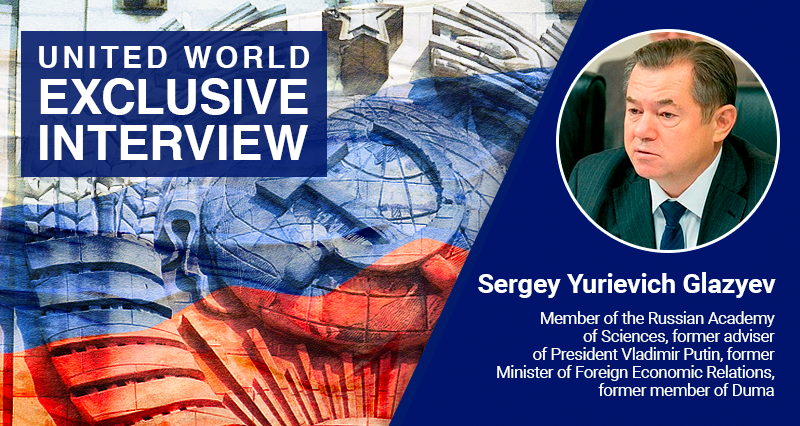




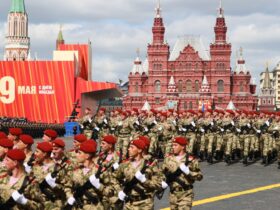
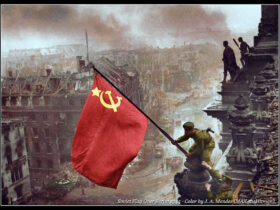
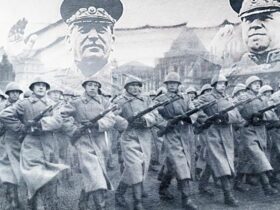
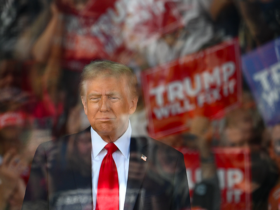

Leave a Reply